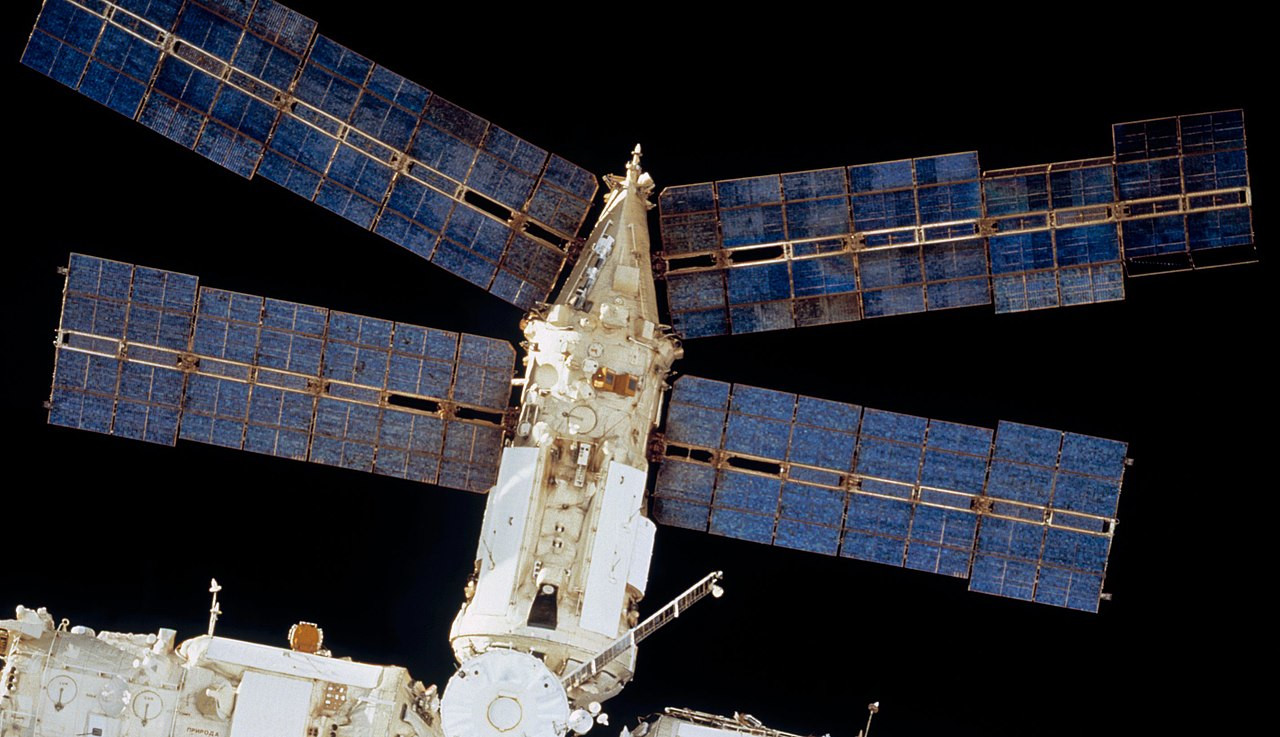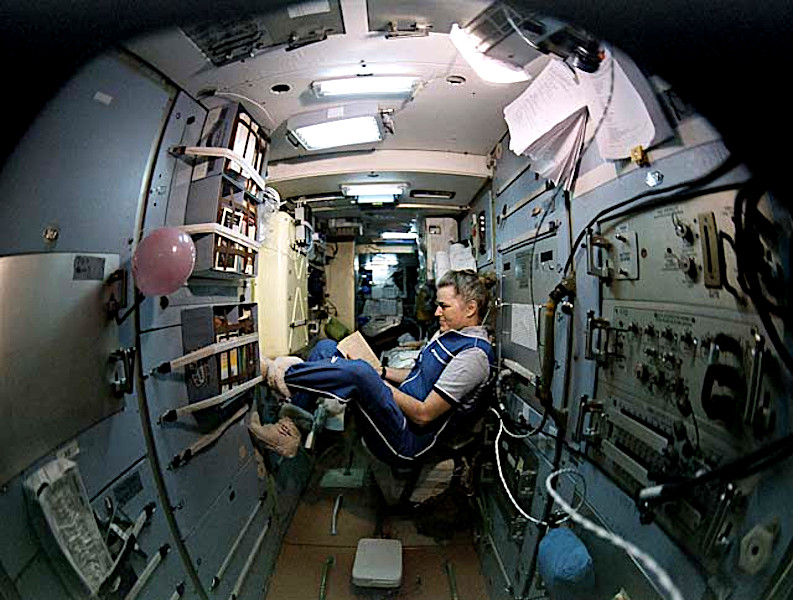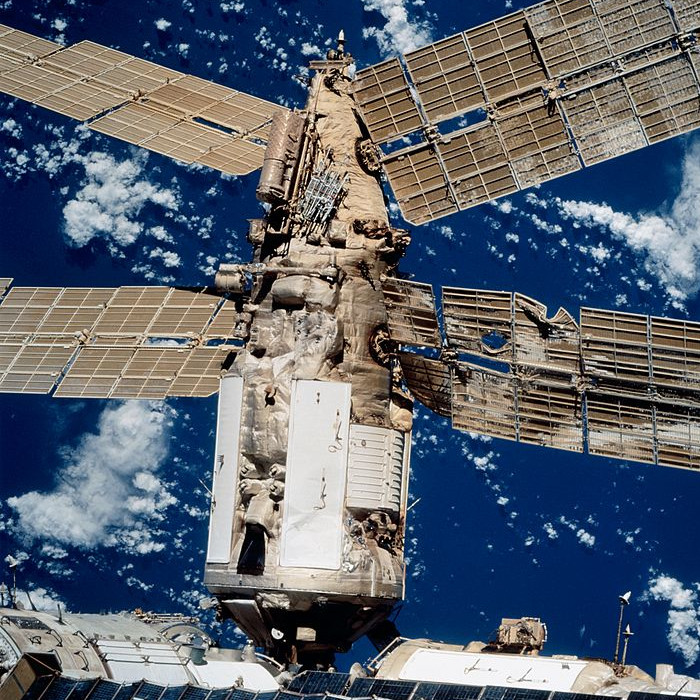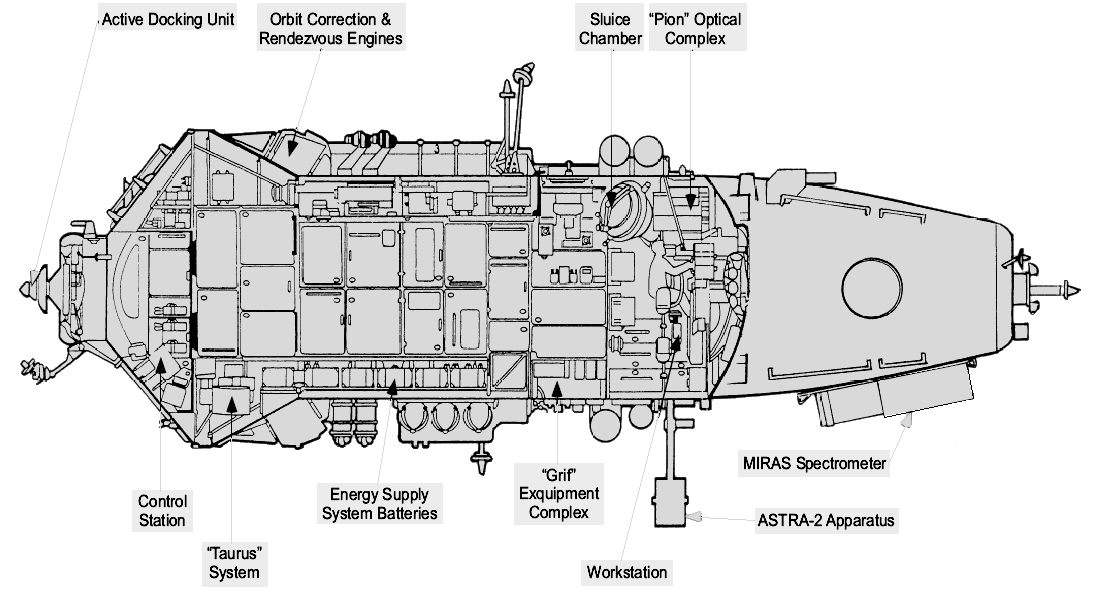
Spektr is connected to the port (left) port of the Core Module.


Spektr is connected to the port (left) port of the Core Module.

Spektr (English: Spectrum) (TKM-O, 77KSO, 11F77O) was the fifth module of the Mir Space Station. The module was designed for remote observation of Earth's environment containing atmospheric and surface research equipment. It also had four solar arrays which generated about half of the station's electrical power.

Spektr was originally developed as part of a top-secret military program. It was planned to carry experiments with space-borne surveillance and test antimissile defense.
The surveillance instruments and two launchers for artificial targets were mounted on the exterior of the module opposite the docking port.
With the return of US-Russian cooperation, in the 1990s, NASA provided funds to complete the Spektr in exchange for installing U.S. experiments.
The Oktava military component was replaced with a conical mounting area for two additional solar arrays. The airlock for the Oktava targets to be used instead to expose experiments to the vacuum of space.
Spektr served as the living quarters for U.S. astronauts until the collision in late June 1997.

Launch Date: May 20, 1995
Launch Complex: Baikonur Cosmodrome
Launch vehicle: Proton-K
Docked: June 1, 1995
Depressurized: June 25, 1997
Re-entry: March 23, 2001
Time in Orbit: 2134 days, 2 hours
Length: 9.1 m
Diameter: 4.35 m
Mass: 19,640 kg
Spectr included the following science and research instruments.
* Pion optical telescope complex.
* 286K binocular radiometer.
* Astra 2 – monitored atmospheric trace constituents, Mir environment.
* Balkan 1 lidar – measures upper cloud altitude.
* EFO 2 photometer.
* KOMZA – interstellar gas detector.
* MIRAS absorption spectrometer – couldn't work due to a failure.
* Phaza spectrometer – surface studies.
* Taurus/Grif – monitored Mir's induced X/gamma-ray background.
* VRIZ UV spectroradiometer.
These experiments were to be a continuation of the research in the top-secret TKS-M module. However, with the end of the Cold War and the shrinking of Russia's space budget, this module was not flown.
On June 25, 1997, the Progress M-34 spacecraft crashed into Spektr while doing an experimental docking maneuver with the Kvant-1 module. The collision damaged one of Spektr's solar arrays and punctured the hull. The crew had enough time to install a hatch cover and seal the module off to prevent depressurization of the entire Mir station.

To seal the module, the crew had to remove the cables that were routed through the (open) hatchway, including the power cables from Spektr's solar panels.
An internal spacewalk in the Spektr module in August 1997 by cosmonauts from Soyuz TM-26, restored these power connections by installing a modified hatch cover to allow the power cables to pass through the closed hatch.
In a second internal spacewalk in October they connected two of the solar panels to a computer system to allow them to be controlled remotely. Approximately 70% of the pre-collision generation capability was then restored.
Spektr was then left depressurized and isolated.
